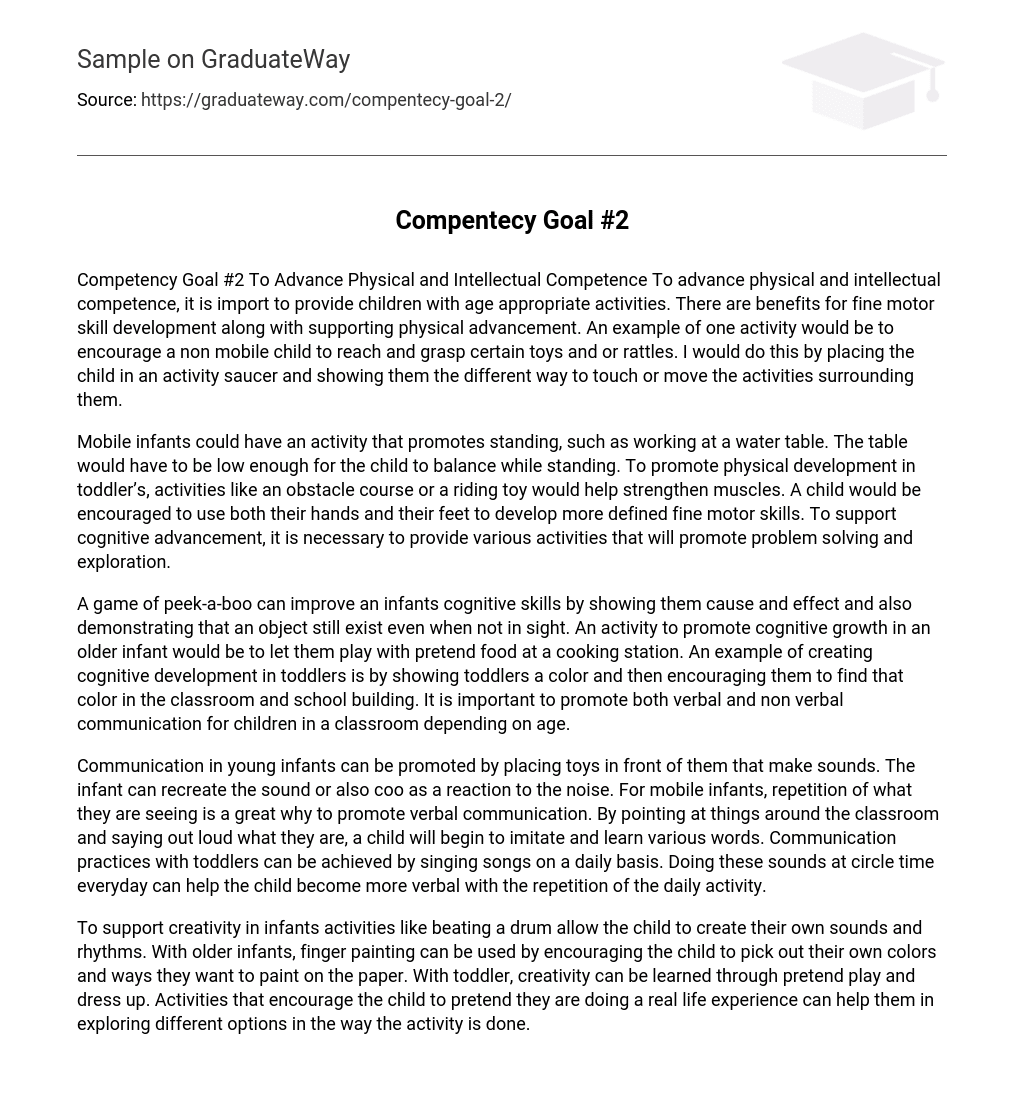To advance physical and intellectual competence, it is import to provide children with age appropriate activities. There are benefits for fine motor skill development along with supporting physical advancement. An example of one activity would be to encourage a non mobile child to reach and grasp certain toys and or rattles. I would do this by placing the child in an activity saucer and showing them the different way to touch or move the activities surrounding them.
Mobile infants could have an activity that promotes standing, such as working at a water table. The table would have to be low enough for the child to balance while standing. To promote physical development in toddler’s, activities like an obstacle course or a riding toy would help strengthen muscles. A child would be encouraged to use both their hands and their feet to develop more defined fine motor skills. To support cognitive advancement, it is necessary to provide various activities that will promote problem solving and exploration.
A game of peek-a-boo can improve an infants cognitive skills by showing them cause and effect and also demonstrating that an object still exist even when not in sight. An activity to promote cognitive growth in an older infant would be to let them play with pretend food at a cooking station. An example of creating cognitive development in toddlers is by showing toddlers a color and then encouraging them to find that color in the classroom and school building. It is important to promote both verbal and non verbal communication for children in a classroom depending on age.
Communication in young infants can be promoted by placing toys in front of them that make sounds. The infant can recreate the sound or also coo as a reaction to the noise. For mobile infants, repetition of what they are seeing is a great why to promote verbal communication. By pointing at things around the classroom and saying out loud what they are, a child will begin to imitate and learn various words. Communication practices with toddlers can be achieved by singing songs on a daily basis. Doing these sounds at circle time everyday can help the child become more verbal with the repetition of the daily activity.
To support creativity in infants activities like beating a drum allow the child to create their own sounds and rhythms. With older infants, finger painting can be used by encouraging the child to pick out their own colors and ways they want to paint on the paper. With toddler, creativity can be learned through pretend play and dress up. Activities that encourage the child to pretend they are doing a real life experience can help them in exploring different options in the way the activity is done.





